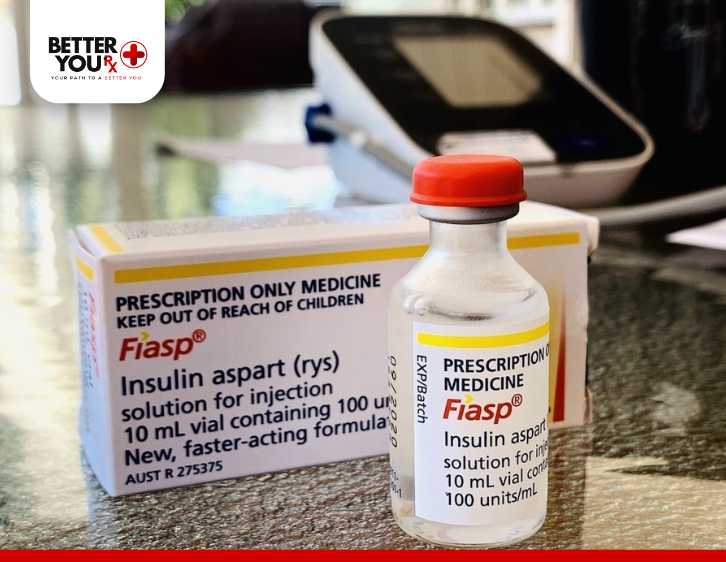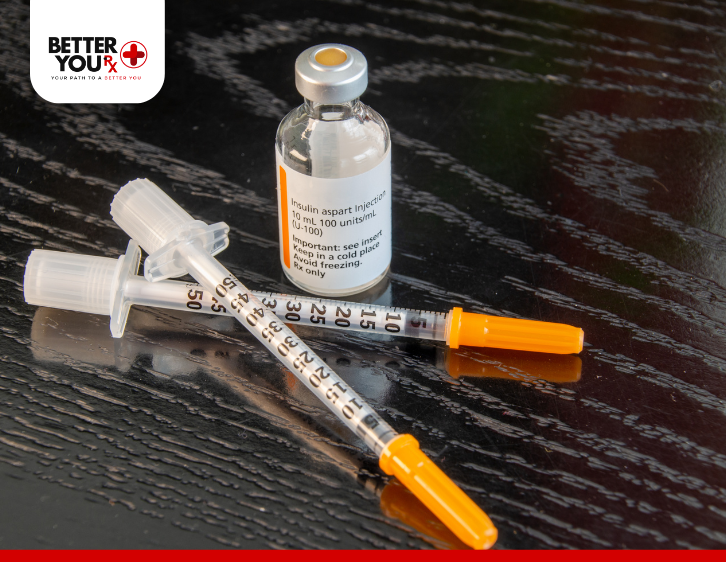Fiasp (insulin aspart) is a fast-acting insulin used to help control blood sugar levels in individuals with diabetes. It is often prescribed for both type 1 and type 2 diabetes to control blood glucose after meals. Fiasp works quickly to lower blood sugar, making it ideal for managing post-meal blood sugar spikes.
If you’ve been prescribed Fiasp in a vial form, it’s important to understand how to use it safely and effectively. In this article, we’ll walk you through the proper steps for using a Fiasp vial, including preparation, injection, and key safety tips.
What is Fiasp?

Fiasp is a rapid-acting insulin that works by helping your body use glucose for energy. It mimics the natural insulin response your body would normally produce after eating. Fiasp has a faster onset of action compared to regular insulin, making it ideal for meal-time blood sugar control. When injected, Fiasp begins to work within 20 minutes, peaks in about 1–3 hours, and continues to work for up to 5 hours.
Fiasp is available in both prefilled pens and vials. While the prefilled pens are convenient for many patients, some individuals may be prescribed the vial for use with an insulin syringe.
Step-by-Step Guide on How to Use Fiasp Vial

1. Gather Your Supplies
Before starting, ensure you have all the necessary supplies ready.
- Fiasp vial (check the expiration date before use)
- Insulin syringe (choose the appropriate syringe size based on the dose you need)
- Alcohol swabs
- A clean, dry surface to work on
- Sharps container for safe disposal
2. Prepare the Insulin Syringe
When preparing to inject Fiasp, you’ll first need to ensure the syringe is ready:
- Check the syringe: Make sure the syringe is clean and in good condition.
- Select the correct dose: Read the insulin prescription and use the correct size syringe for your prescribed dose of Fiasp. Syringes typically have markings that indicate the insulin units they hold (e.g., 0.5 units, 1 unit, 10 units, etc.).
3. Clean the Vial and Injection Site
It’s essential to maintain cleanliness to reduce the risk of infection:
- Clean the vial: Use an alcohol swab to wipe the rubber stopper of the Fiasp vial. This step is important to ensure the vial is sterile before you insert the syringe.
- Clean your injection site: Choose an injection site, such as the fatty tissue of your stomach, thigh, or upper arm. Clean the area with an alcohol swab and allow it to dry before proceeding.
4. Draw Insulin into the Syringe
Here’s how to correctly draw Fiasp insulin into the syringe:
- Insert the syringe needle into the vial: Hold the Fiasp vial upright and insert the syringe needle into the rubber stopper.
- Push air into the vial: Before drawing insulin, push the plunger of the syringe to inject air into the vial. This prevents a vacuum from forming, which can make it harder to draw the insulin.
- Withdraw the correct dose: After injecting air, turn the vial upside down and draw the insulin into the syringe by pulling back the plunger. Ensure you pull the correct dose of insulin by checking the syringe markings.
- Check for air bubbles: Gently tap the syringe to allow air bubbles to rise. If you see bubbles, push the insulin back into the vial and re-draw the correct dose without bubbles.
5. Prepare for the Injection
Once you’ve successfully drawn the correct dose of Fiasp, you’re ready to administer the injection:
- Ensure the needle is not touching anything: Keep the needle clean and sterile. If necessary, change the needle if it has touched an unclean surface or is bent.
6. Inject the Insulin
Here’s how to safely inject Fiasp:
- Pinch the skin: With one hand, gently pinch the skin around the cleaned injection site. This helps ensure you inject into the fatty tissue, not the muscle.
- Insert the needle: With your other hand, quickly and firmly insert the needle into the skin at a 90-degree angle.
- Push the plunger: Slowly push the plunger to inject the insulin. Make sure you administer the full dose as prescribed.
- Remove the needle: Once the insulin has been injected, remove the needle and release the pinched skin.
7. Dispose of the Needle Safely
After the injection, immediately dispose of the syringe and needle in a proper sharps container. Never throw needles or syringes in the trash, as they can pose a risk to others.
8. Monitor Your Blood Sugar
After administering your insulin dose, it’s important to monitor your blood sugar levels as directed by your healthcare provider. Fiasp is fast-acting, so it’s important to check your blood glucose levels regularly to ensure they stay within your target range.
Important Tips for Using Fiasp Vial

- Storage: Store your Fiasp vial in the refrigerator, away from direct heat and sunlight. Do not freeze it. After opening the vial, you can store it at room temperature for up to 4 weeks.
- Injection Sites: Rotate your injection sites regularly to avoid irritation and lipodystrophy (a condition that causes fatty tissue buildup). Avoid injecting into areas where the skin is scarred or hardened.
- Do Not Share Syringes or Vials: Sharing insulin syringes or vials increases the risk of infection. Use a new syringe for each injection.
- Consult Your Healthcare Provider: Always follow the dosing instructions from your healthcare provider. They may adjust your dose based on your blood sugar readings and overall diabetes management.
Potential Side Effects of Fiasp
Like any medication, Fiasp can cause side effects, although not everyone will experience them. Common side effects include:
- Low blood sugar (hypoglycemia): This is the most common side effect of insulin. Symptoms may include shakiness, sweating, confusion, or dizziness.
- Injection site reactions: Redness, swelling, or irritation at the injection site may occur.
- Allergic reactions: In rare cases, some individuals may experience an allergic reaction to insulin.
If you experience severe side effects or have concerns about using Fiasp, contact your healthcare provider immediately.
Conclusion
Using Fiasp insulin from a vial is an essential part of managing blood sugar levels for many people with diabetes. By following the steps outlined in this guide, you can ensure that you are administering the medication correctly and safely. Always work closely with your healthcare team to adjust your dosage as needed and monitor your blood sugar levels regularly.
If you’re looking for convenient access to prescription insulin, services like Better You Rx, a pharmacy-affiliated website based in Canada, can help connect you with affordable options. As with any medication, always consult your doctor before making any changes to your insulin regimen. Proper training and regular monitoring are key to managing diabetes successfully.



